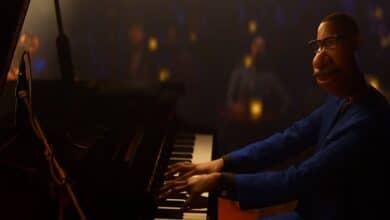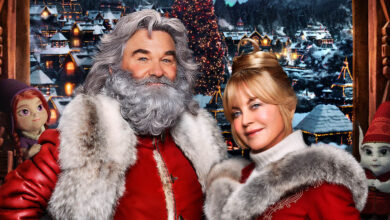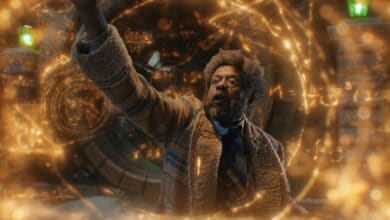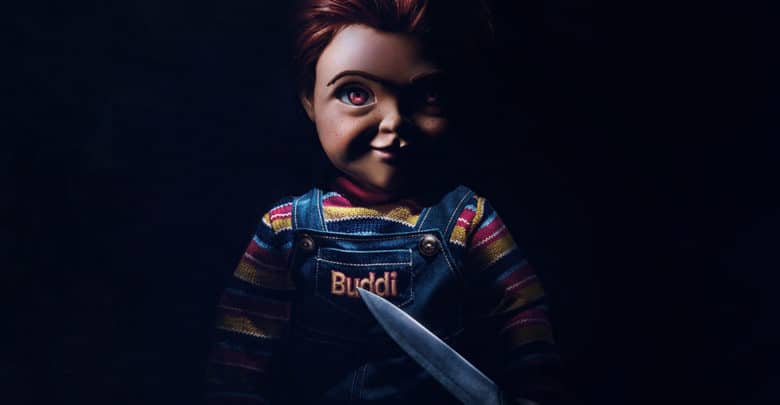
With killer dolls seemingly all the rage thanks to breakout hits like the Annabelle franchise and The Boy, it’s no wonder that we finally got a remake of Child’s Play, AKA the quintessential 1988 serial-killer-uses-voodoo-to-place-his-soul-inside-a-creepy-doll horror flick. After six sequels, the latest having just arrived in 2017, this update ignores the magical lore of that franchise and crafts a far more tech-centered narrative. Does it work? Well… kinda.
Much like the original, Child’s Play centers on Andy Barclay (aged up to 13-year-old Gabriel Bateman), whose young single mother Karen (Aubrey Plaza) juggles a retail job with raising her hearing-impaired son and trying to find love on the side. In a bid to appease her introverted spawn, Karen brings home a returned Buddi doll… which if you’ve paid attention to the last three decades of pop culture, you know better as the murderous Chucky (voiced by Mark Hamill).
This time though, Chucky doesn’t start off as a deranged serial killer. Instead, he’s just a normal doll sporting conspicuously Amazon Alexa-like abilities, albeit without the safety parameters installed in other dolls due to a somewhat out of place Vietnamese assembly line worker seeking revenge for his termination. Shortly after Andy receives his new Buddi doll (which names itself Chucky, oddly enough), the two begin to form a special bond once Andy realizes that, like himself, Chucky is damaged goods.
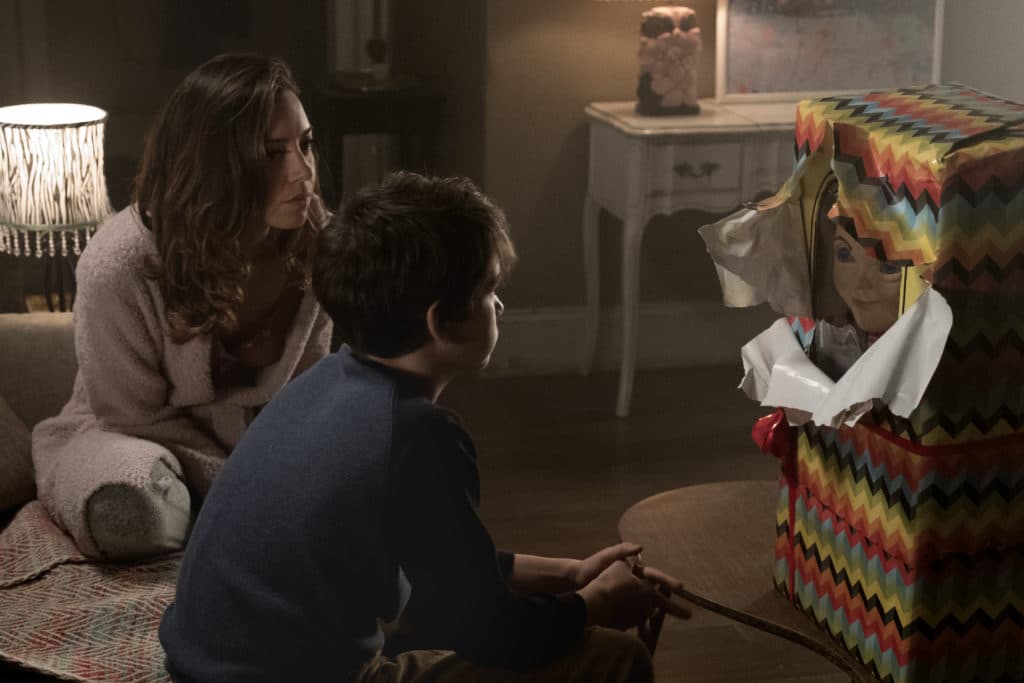
What follows is more-or-less what you’d expect, with Chucky going on a small murder spree as his innocent robot mind is transformed by teenage stimuli and bad programming. Over the course of this bloody hijinks, we’re introduced to Karen’s older boyfriend Shane (David Lewis), older neighbor Dorene (Carlease Burke), and her son, Detective Mike Norris (Brian Tyree Henry).
The aforementioned transformation of Chucky is easily the standout element that this remake brings to the table. Mark Hamill adds a layer of innocence to the role, which is jarring considering the character’s long history of being an angry lunatic from stage one. Here, Chucky is only a killer doll because he doesn’t understand the world around him. While the logic behind this childlike mind is iffy at best, once you get past that flaw it’s actually incredibly charming and even a bit heartbreaking to watch. He’s Andy’s friend to the end, and unfortunately that means ending several other people along the way.
Less appealing is the Alexa analogue, which makes incredibly little sense from a marketing standpoint. Even the characters point out how creepy the doll is, stopping short of pointing out how unappealing it would be for this thing to be the hub for your smart devices. How Amazon parallel Kasdan is able to find success with this product is hard to imagine. When we finally arrive at the disappointing finale in which these other devices get in on the action, it’s just kinda dumb.
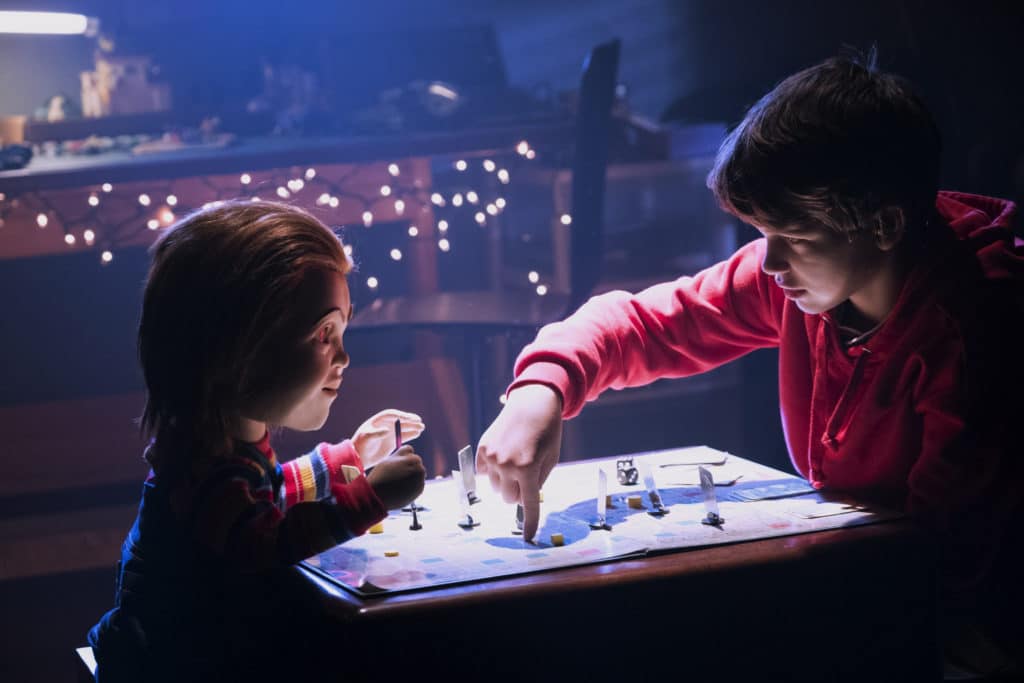
Despite heavy online backlash, the Buddi design actually warrants very little criticism. It’s not quite as striking as the original, but it takes very little time to adapt to its plastic surgery run amok features. Pair it with the outlandish kills and often chilling dialogue (that Buddi song though!) and you have one hell of a movie monster.
The other big addition is a group of friends for Andy. It makes sense, especially considering how much older writer Tyler Burton Smith has made him. Too bad that the friends, Falyn and Pugg (Beatrice Kitsos and Ty Consiglio), just feel like Asylum versions of the Stranger Things kids. That’s not to say they’re awful, but it does feel as if the filmmakers wanted their relationship with Andy to feel more Goonies than quirky movie-of-the-week stock characters.
With this group of friends, we do get some very fun moments, especially the prolonged reference to Texas Chainsaw Massacre 2 that’s potentially the horror subplot of the year. However, we’re also treated to quite a bit of forced drama that works at times while falling apart completely at others. Much like the film itself, it’s a bit of a mixed bag.
Aside from Mark Hamill’s solid Brad Dourif riff (Dou-Riff?), our big standouts are Gabriel Bateman and Brian Tyree Smith. Bateman’s take on Andy does the impossible and doesn’t make you want to punch a 13-year-old protagonist. He comes off as nuanced and sincere, while also having all of the troubling attributes of a young boy dealing with a new place, new friends, and his mom’s dickhead boyfriend. Smith, meanwhile, is as charming as he is in everything, and although he’s not as grounded as Chris Sarandon’s cop from the original, he brings believability and warmth to the role. It’s too bad that he feels tagged on by the end.
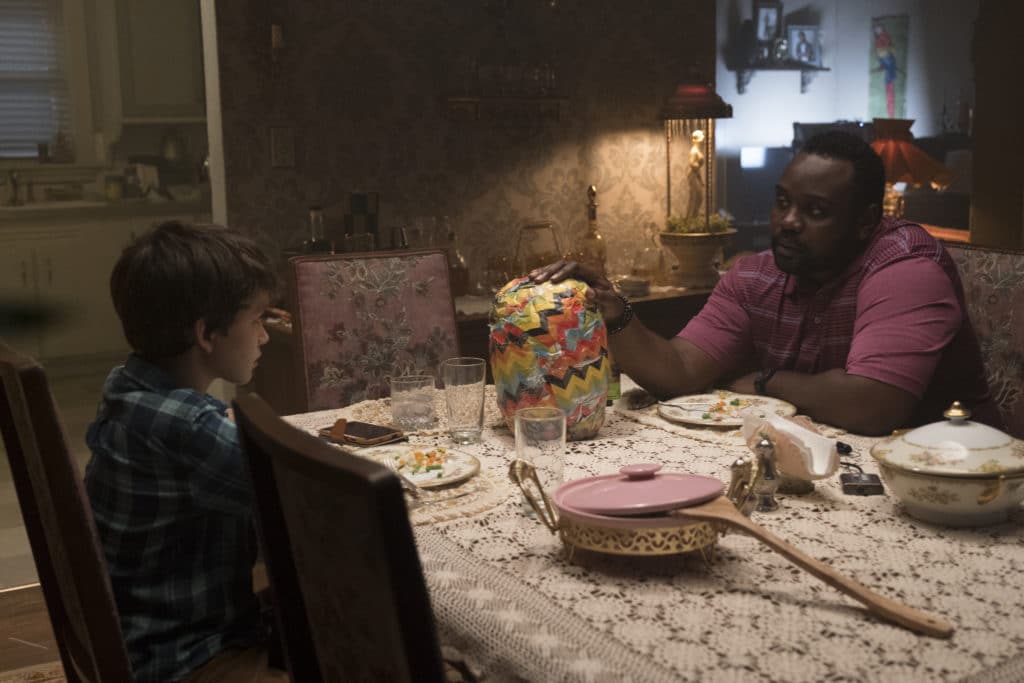
Director Lars Klevberg is an odd choice for this gig. Previously he’s directed the unreleased (in the US anyway) Polaroid, as well as the short that served as its basis. This isn’t to say he does a bad job. In fact, he provides style and tension that could have easily been overlooked by a more commercial director. Director of Photography Brendan Uegama aids Klevberg immensely here, although his TV style does shine through in some cheap-looking moments. Then there’s the tonal inconsistencies, which feel as though they’d be handled better in the hands of the original’s Tom Holland, or even Don Mancini.
Speaking of Mancini, the real problem most fans likely have with this film is the lack of his involvement. Mancini wrote the original film and took over as director starting with Seed of Chucky. Since then, he’s developed the franchise into a consistently fun and bizarre series. His approach doesn’t always work, but his dedication to staying weird and unique has made for arguably the most charming of the big slasher franchises. Plus, 2013’s Curse of Chucky is such a glorious affront to remakes in general that it almost feels like Child’s Play 2019 is a kick in the face for the fandom. Add to that his upcoming Child’s Play TV series, and you can understand how easy it is to write off this film as a soulless cash grab.
Much like our diminutive killer, though, there’s more to this film than its outer shell. It speaks volumes about how pop culture and lackluster parenting can damage a child, and very rarely does it take the easy way out in referencing its predecessor. For the most part, all of the new elements join successfully with the old, providing us with a worthy, if extremely flawed, update to everyone’s favorite killer doll. By the time the last nonsensical shot transitions into the credits, you may just find yourself as in love with this interpretation as with the original.
Give this Buddi a chance, and maybe he’ll be your friend to the end as well.
Grade: B-
MPAA Rating: R
Running Time: 1hr 30m
Review
Rating
RN Review of Child's Play
This unnecessary remake finds its own gory purpose for fans of Chucky.

